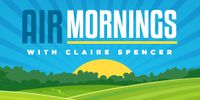As part of an initiative to teach students more about First Nations, Métis and Inuit history and contributions, the Alberta Government is providing Canadian Geographic Indigenous Peoples Atlases to every junior and high school in Alberta.
The four-volume print includes an interactive website and an educational app to help students learn in a more creative way.
The first three volumes concentrate on First Nations, Inuit and Métis perspectives and peoples. The fourth, perhaps most importantly, covers the Truth and Reconciliation Commission and residential schools.
“We all have a part to play in reconciliation, and it is critical teachers have the resources they need to teach this important material in their classrooms. The atlas includes information on Indigenous communities, languages, education, treaties, and lands, told through authentic Indigenous voices. It will serve as a powerful education tool as we move forward together along the path of reconciliation," says Richard Feehan, Minister of Indigenous Relations.
Residential schools are a dark part of Canada's past and only recently have Canadians had the chance to learn about the trials and tribulations of Indigenous peoples in residential schools.
"I would like to commend the Government of Alberta, for their commitment to implementing the Truth and Reconciliation Commission’s call to actions related to education. The Indigenous Peoples Atlas of Canada is an important tool that provides Indigenous perspectives shared through maps, artwork, history, culture and more. The true history of our peoples has never been taught in our schools. We need to build more understanding between our cultures and it can start simply by a young child picking up the atlas. I believe that it is up to every person to get educated on Canada’s true history," says Marlene Poitras, Alberta Regional Chief, Assembly of First Nations.
Comments? Questions? Story ideas? Email us at news@discoverairdrie.com





